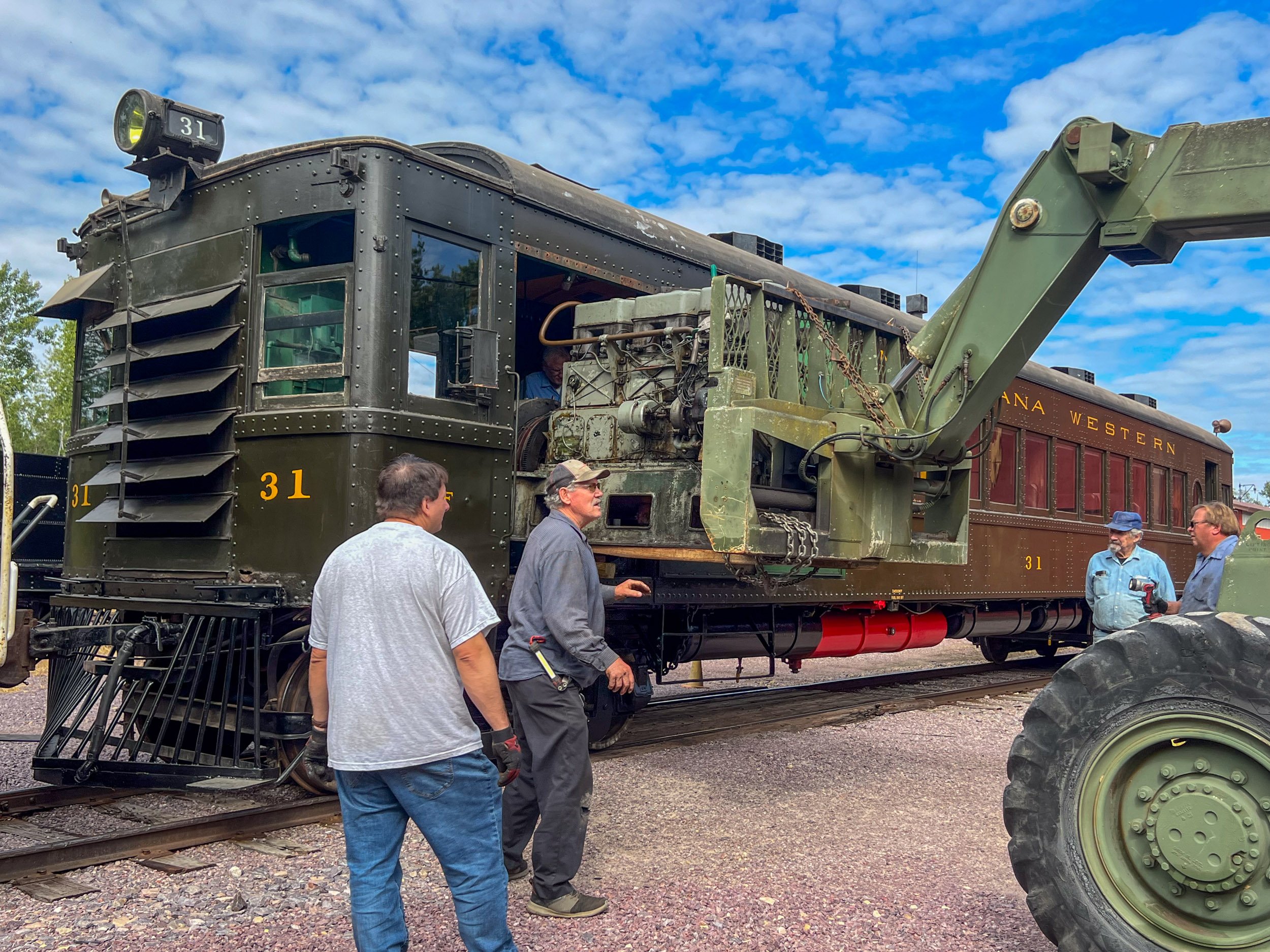Restoration of Oldest Surviving Electro-Motive Locomotive Begins
NORTH FREEDOM, WIS. — The Mid-Continent Railway Museum is embarking on the full operational restoration of Great Northern No. 2313, a historic and one-of-a-kind gas-electric motor car originally built in 1925 to connect the rural communities of the Great Northern Railway. Deemed a Historic Mechanical Engineering Landmark in 2003 by the American Society of Mechanical Engineers, it will carry passengers over the Museum’s 7-mile heritage railroad once restoration is completed. With an estimated restoration cost of $300,000, volunteers and donations are welcome to support the project at midcontinent.org.
“Great Northern No. 2313 is already an important display piece, but we want to provide visitors with an immersive and moving experience that tells the story of railroad technology through the last century,” explained Rusty Schramm, project manager. “We have recently undertaken repairs to the roof, radiator, control system, and fuel tank, but the antique Winton engine has not operated since 1987, and will be our first major undertaking.”
A precursor to the modern diesel locomotive, the motorcar was constructed in a partnership between Winton Engines and the Electro-Motive Company in Cleveland, Ohio. Mid-Continent has contracted with FMW Solutions, a rail preservation firm with experience in repairing vintage locomotives. “As someone who has spent my career dedicated to the maintenance and preservation of EMD locomotives, having the chance to oversee the restoration of this historic engine is a distinct privilege,” said FMW Senior Mechanical Associate and Winton Project Lead Allen Rider. “The engine / generator arrived at the FMW Tennessee machine shop earlier this month, and we will begin the initial disassembly and inspection in the coming weeks.”
After completing the initial inspection and assessment, FMW will work with Mid-Continent to formalize a restoration plan. The restoration will take place at FMW’s Soddy-Daisy facility, which hosts a complete machinery and fabrication shop that can handle the restoration work. The restoration of the engine is further aided by a large cache of original, new-old stock Winton Engine components that have been donated to Mid-Continent.
“Our goal is to have her up and running in time for her centennial in 2025,” says Schramm. “It’s a worthwhile goal and achievable with donations and volunteer help.”
GREAT NORTHERN NO. 2313 HISTORY
Motorcars of the era combined elements of a locomotive, baggage car, and passenger car all into a single vehicle and were often used to replace a two-or three-car steam-powered passenger train, greatly reducing maintenance as well as lowering the number of crewmen needed to operate the train from four or five down to just two. When the Great Northern began using the gas-electric motor car, it reduced costs for the route by 50% as well as reduced travel time compared to the train it replaced.
The development of the early gas-electric motor cars like the one at Mid-Continent directly contributed to the development of diesel-electric locomotives in the years that followed. The same basic technology that powers most of America’s trains today can be seen in its rudimentary form aboard the motor car. Prior gas-electric motor cars had separate controls for the gasoline and electrical controls, but the Hermann Lemp control system used on the No. 2313 replaced this with a single lever system that was simple enough that a steam locomotive engineer could comfortably use it—an important consideration in the transition from steam to gas-electric and later diesel-electric locomotives.
Motor car No. 2313 was donated to Mid-Continent Railway Museum in 1966 by the Great Northern. It was occasionally used to give rides over the years at the museum and was a featured exhibit at the locomotive manufacturer’s 50th anniversary in 1972, where at least 10,000 people toured the motor car. Since then, it has remained an important, albeit non-operational display piece at the museum.
ABOUT MID-CONTINENT
Mid-Continent Railway Historical Society–also known as Mid-Continent Railway Museum–is an outdoor, living museum and operating railroad recreating the small town/short line way of life during the “Golden Age of Railroading,” with operating trains, educational exhibits, and displays of restored rolling stock. Mid-Continent has operated at North Freedom, Wisconsin since 1963. Learn more at www.midcontinent.org.
ABOUT FMW SOLUTIONS
FMW Solutions and its subsidiary National Rail Consulting Group offer a suite of professional services for the railroad industry, including mechanical and engineering design, diesel locomotive servicing and repair, rail operations, strategic planning support, marketing, public relations, safety compliance administration, training, and alternative fuel technology research and development. FMW is also an accomplished rail preservation resource, with expertise in the restoration and operation of historic equipment. For more on FMW Solutions, to request a quote, proposal, or to explore opportunities for your railroad operation, email us, or call (423) 425-9753.



